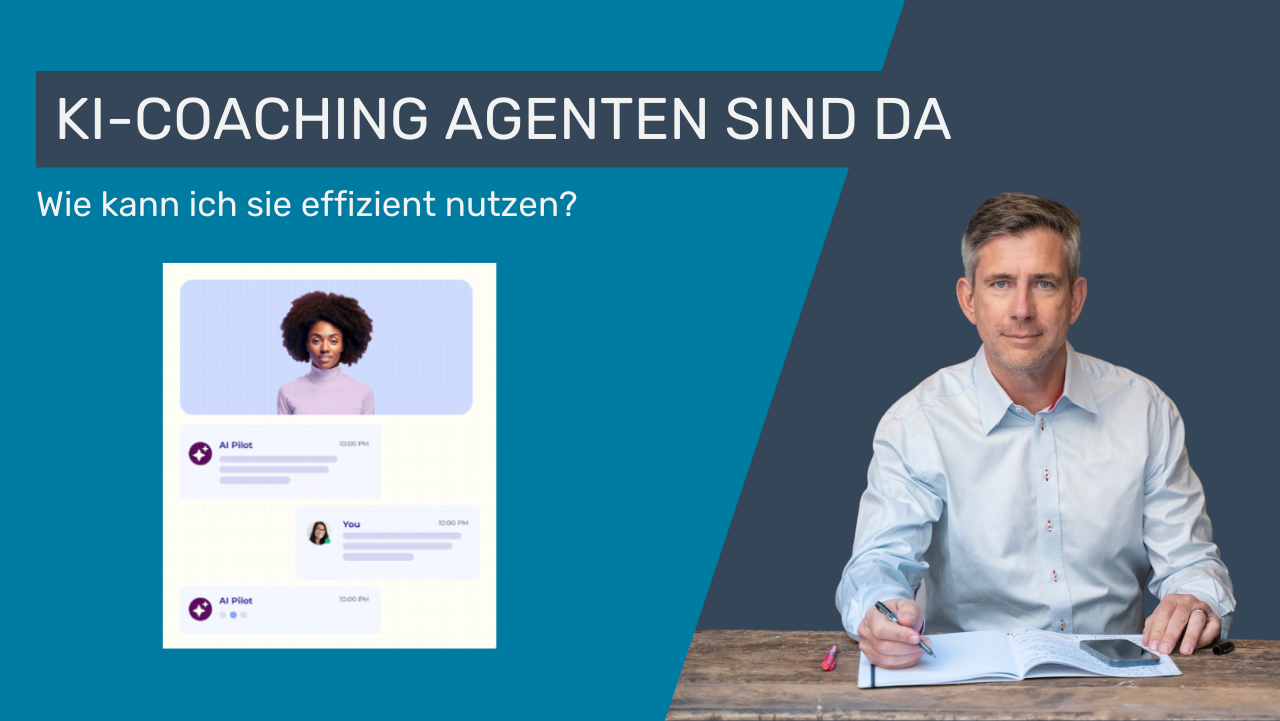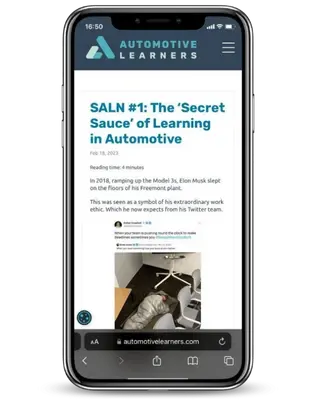The dam has broken. After an "AI winter", the world is hit by a tidal wave of new AI models in the first two months of 2025:
- Meta launches Llama 3.1 and OPT-175B.
- OpenAI launches GPT-4.
- EleutherAI launches GPT-J.
- Google launches Gemini 2.0 Flash Thinking Experimental.
- Anthropic launches Claude 3 Opus.
- Stanford and University of Washington launch s1-32B.
- DeepSeek launches DeepSeek v1 to v3.
- Alibaba launchesQwen2.5-32B-Instruct.
- X (Elon Musk) launches Grok 3.
And this is already changing coaching today.
As early as May 2024, a study by Cornell University predicted that language models would be better than humans at mapping metacognition ("I know how I think"), the core function of a coach.
This is already the case today. AI is becoming independent. But it is not yet sure-footed.
Nevertheless, we have now reached a stage where AI agents are functioning. And they are starting to show human traits.
The result of a long process
In 1942, Isaac Asimov formulated the three laws of robotics that inspired the 2003 film "I Robot" starring Will Smith.
A robot must not injure a human being or, through inaction, allow a human being to be harmed.
A robot must obey orders given to it by humans, unless such orders would contradict the First Law.
A robot must protect its own existence as long as such protection does not contradict the First or Second Law.
The movie a little over 15 years ago depicted how a machine can "simulate" human traits and self-awareness and something like emotions.
The latter may come as a surprise. But the South Tyrolean brain researcher and cyberneticist Valentin Braitenberg used simple Lego vehicles, which he controlled with light receptors, to evoke behavior that reminds us of emotions. I devoured the book at the beginning and it completely changed my perspective on human emotions.
Sonny is different from the others (Source: I, Robot (2004).
But what is more important than having emotions is understanding your own thinking, metacognition. Because if I understand my own thinking, I may also be able to understand the thinking of others.
That is the basis of empathy. Empathy is the basis of a deep conversation, i.e. of coaching.
The breakthrough in AI coaching: the "thinking aloud method"
The quality of LLMs is measured by how well they cope with tests that students have to take to pass a university degree. Current scores on a particularly difficult test are around 60%.
The biggest problem with AI so far is that it hallucinates and invents truths. In the new models with "Advanced Reasoning", the thought process involved in so-called reasoning has been made visible in order to remedy this. This makes it possible to check the accuracy of the conclusions and to identify, correct or filter out hallucinations.
This makes the AI's statements stable and human-like.
DeepSeek displays its thought process. This gives the user and the LLM access to metacognition.
By mapping the thought process, both the user and the AI have access to the way of thinking, to metacognition. This is the step towards a kind of "machine empathy". Think of the AI-controlled robot in China and its misstep: it can already do many things, but it is not always sure-footed.
In the same way, AI can already take on individual tasks in the coaching process. And the impulses of an AI coach can be generated faster and cheaper and are available 24/7.
LLMs are becoming more and more human.
The development of AI models is analogous to the human brain, which means they are improving rapidly.
The language models are subdivided into expert models, similar to the human brain, so that specific queries no longer address all nodes of the overall model, but only a subset. This significantly reduces power and time consumption as well as the required computing capacity.
The new models are multimodal, and many of them are open source. In this way, human-like properties are made available to a broad public at low cost.
AI coaching becomes personal through graphs.
If AI is to take on the role of a coach for me, the question is how the machine becomes personal.
This is where different content graphs come into play, which define and elaborate the prompts for the LLMs. Content graphs are structured like the associations of our brain, with nodes (comparable to a node of nerve cells) and the connections between these nodes, the so-called edges, which correspond to the dendrites of a nerve cell, at the ends of which the synapses establish the connection to the next node.
During learning, new connections are formed between nodes: When a nerve cell is excited more often, it forms new connections to other nodes. New habits and knowledge are anchored in the brain. This is exactly the process that takes place on a microscopic level during coaching.
Two graphs in particular are being developed by AI coaching providers:
- The person graph, which includes the entire conversation history, preferences and personalization of the chatbot. The coachee can therefore choose in which language, with which voice and on which specific topics they would like to be addressed by the AI coach.
- The coaching graph, which contains specific coaching processes, tools, basic attitudes, ethical guidelines, etc.
AI coaching providers differ in the coaching graphs.
For example, coaching providers could be differentiated according to the extent to which their coaching graph is based on scientific principles. Which image of humanity and which basic attitudes of the coach are used in the conversation (such as appreciation, active listening, neutrality or conveying a positive self-esteem).
This changes the coaching graph.
In the example, we have created a content graph based on the "6 pillars of self-esteem" by Nathaniel Brenda. In the future, we will see benchmarks of coaching AIs that examine the variables usability, personalization, coaching graph and use cases.
As this development is quite new, it will take a few months before sufficient data is available for such a detailed benchmark.
The current market leader in coaching AIs is CoachHub.
Our technology partner for scaling coaching as a performance and change tool, CoachHub, already firmly established its presence in this space in 2023 when it launched AIMY, a coaching chatbot based on artificial intelligence. In February 2025, the chatbot was launched based on graph technology in a partnership with Microsoft.

The AIMY launch team
AIMY™ acts as a proactive coaching partner that combines established methods with AI to conduct targeted development conversations, support business goals and deliver measurable results. The solution offers round-the-clock availability, multilingual support and customizability to individual preferences - from voice to personality. Developed in collaboration with Microsoft and based on Azure AI Foundry, AIMY™ ensures GDPR-compliant security, scalability and seamless integration with existing systems. Through partnerships with Microsoft and validation by the International Coaching Federation (ICF), AIMY™ sets new standards in personnel development. Companies such as CEMEX are already using the solution to address skills shortages and promote a culture of continuous learning.
3 ways to use AI coaches between sessions.
The success of coaching is directly proportional to compliance and discipline between sessions, as I know from my own practice as a coach in the SKILL-2-SKILL program for car managers . Are the exercises completed in full? Are new procedures introduced to embed beneficial behaviors? Is the "Mourning Journal" filled out regularly to make the inner dialog concrete and positive?
This is the sweet spot for an AI chatbot.
Studies show that AI coaching can be as efficient as a human coach in "goal-focused coaching".
AI coach bots can:
- Give prompts for daily reflections
- conduct dialogs and role-play in order to prepare for interviews, presentations or discussions and simulate and evaluate certain lines of reasoning
- Pattern recognition in behaviors and cues for new habits and procedures
However, there are also areas in which AI coach bots have not yet proven themselves.
This includes the ability to navigate complex situations that require a nuanced and empathetic approach. The AI's sensory capabilities are still limited; it is not yet able to interpret body language or vocal tones, for example. As a result, the information space that is theoretically accessible to AI is significantly smaller than that of a human coach. AI bots can become empathic, but for the time being with a much narrower bandwidth than humans.
And this seems set to remain the case for a while yet.
AI will therefore not replace the coach. Rather, well-placed AI coaching will make the coach much more effective and massively reduce costs for the coachee.
Would you like to try AI coaching for yourself? Then click here.

 Change Tools
Change Tools

 Change Tools
Change Tools
 Change Tools
Change Tools
